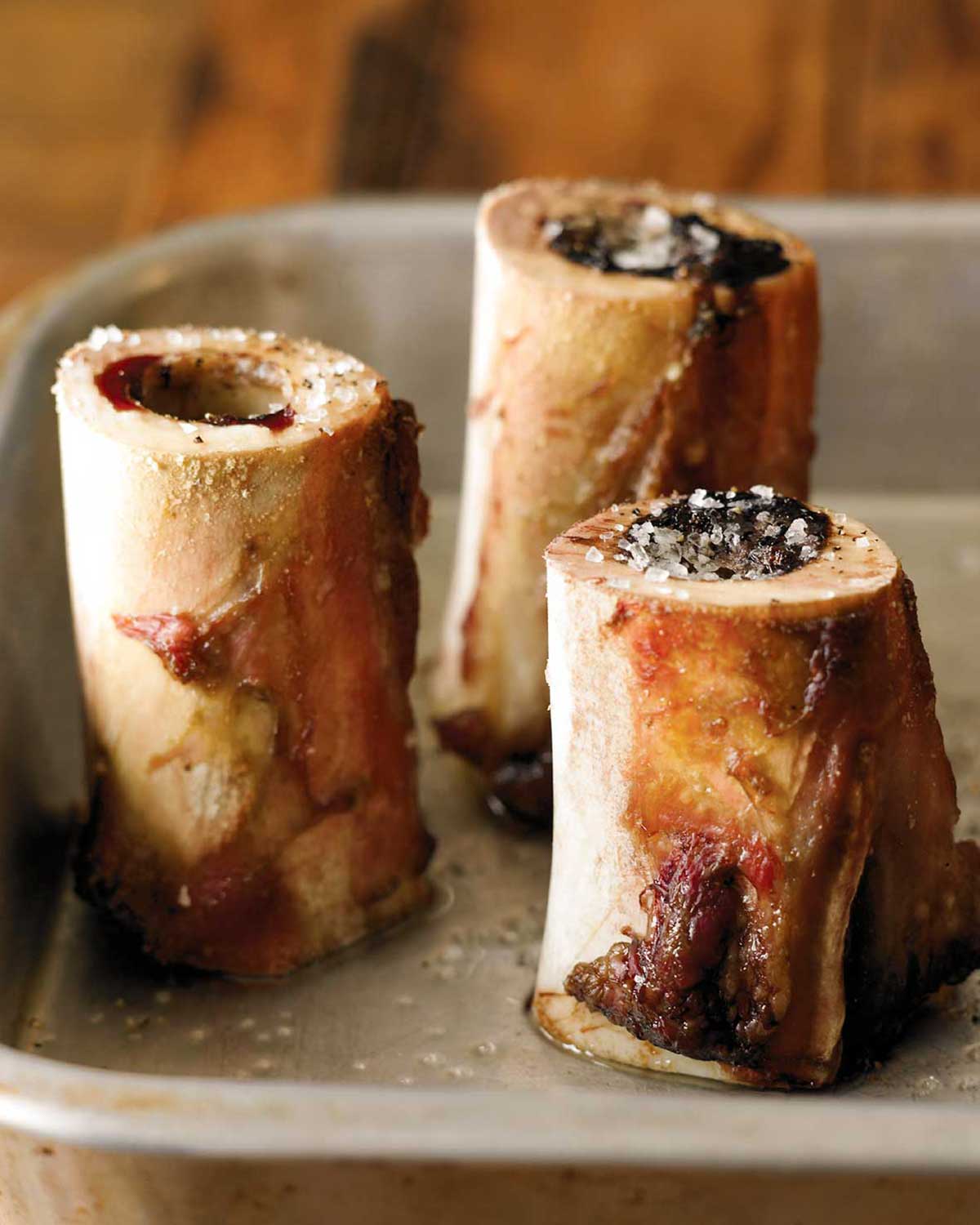
TL;DR (Quick-Answer Box)
- What it is: Roasted bone marrow is an appetizer consisting of beef femur bones (center-cut or split lengthwise) roasted until the marrow becomes soft, spreadable, and rich.
- Why you’ll love it: It has the texture of savory “meat butter” and is surprisingly nutritious, containing 69% unsaturated fat. It requires only 3 ingredients.
- How to make it: Soak the bones in salted ice water for 12 to 24 hours to draw out blood and impurities. Roast at 450°F (230°C) for 15 to 25 minutes until the marrow puffs slightly. Season with sea salt and serve.

Jump To
- TL;DR (Quick-Answer Box)
- Why this roasted bone marrow recipe works
- Notes on ingredients
- Visual step-by-step guide: Roasted bone marrow
- Your roasted bone marrow questions, answered
- Pro tips & troubleshooting
- Storage & reheating
- What to serve with marrow bones
- More outstanding beef recipes
- Write a Review
- Roasted Bone Marrow Recipe
- Recipe Testers’ Reviews
I don’t like bone marrow. Never have. But The One is nuts for it. I remember one time we were dining at Dinner by Heston Blumenthal in London. The minute he saw roasted marrow bones on the menu, he was locked and loaded. It included snails, parsley, anchovy, mace and pickled vegetables. His passion for it was palpably primal.
That’s when I caved and decided to make it for him. I knew I would have to look no further than my friend Jennifer McLagan, author of Odd Bits. Over dinner in NYC, eating what I’m sure was a plate of innards knowing Jennifer, she told me people avoid roasted bone marrow because it’s fat. But, she pointed out, that marrow is 69 percent unsaturated fat. Plus, it’s also full of iron, phosphorus, vitamin A, and trace amounts of thiamin and niacin. It even contains elements that boost the immune system. I was still unmoved and unconverted. What can I say, I’m a heathen. But The One gets his marrow every now and again. Cue “What I Did for Love” from A Chorus Line.
Chow,

Featured Review
I loved this beef bone marrow recipe! I have been so anxious about making it, but it was super easy! I did just as the recipe instructed, and it turned out beautifully!
Denise

Why this roasted bone marrow recipe works
The secret to restaurant-quality marrow lies in the soak. Dunking the bones in salted ice water draws out blood and impurities. The result? A pure, savory flavor and lovely color rather than a blech metallic. Roasting at a high 450°F (230°C) is also a must. Bone marrow is mostly fat, so a lower temperature would simply melt it away. The high heat caramelizes the surface while keeping the center rich and puddin’-like before it renders out.
Notes on ingredients
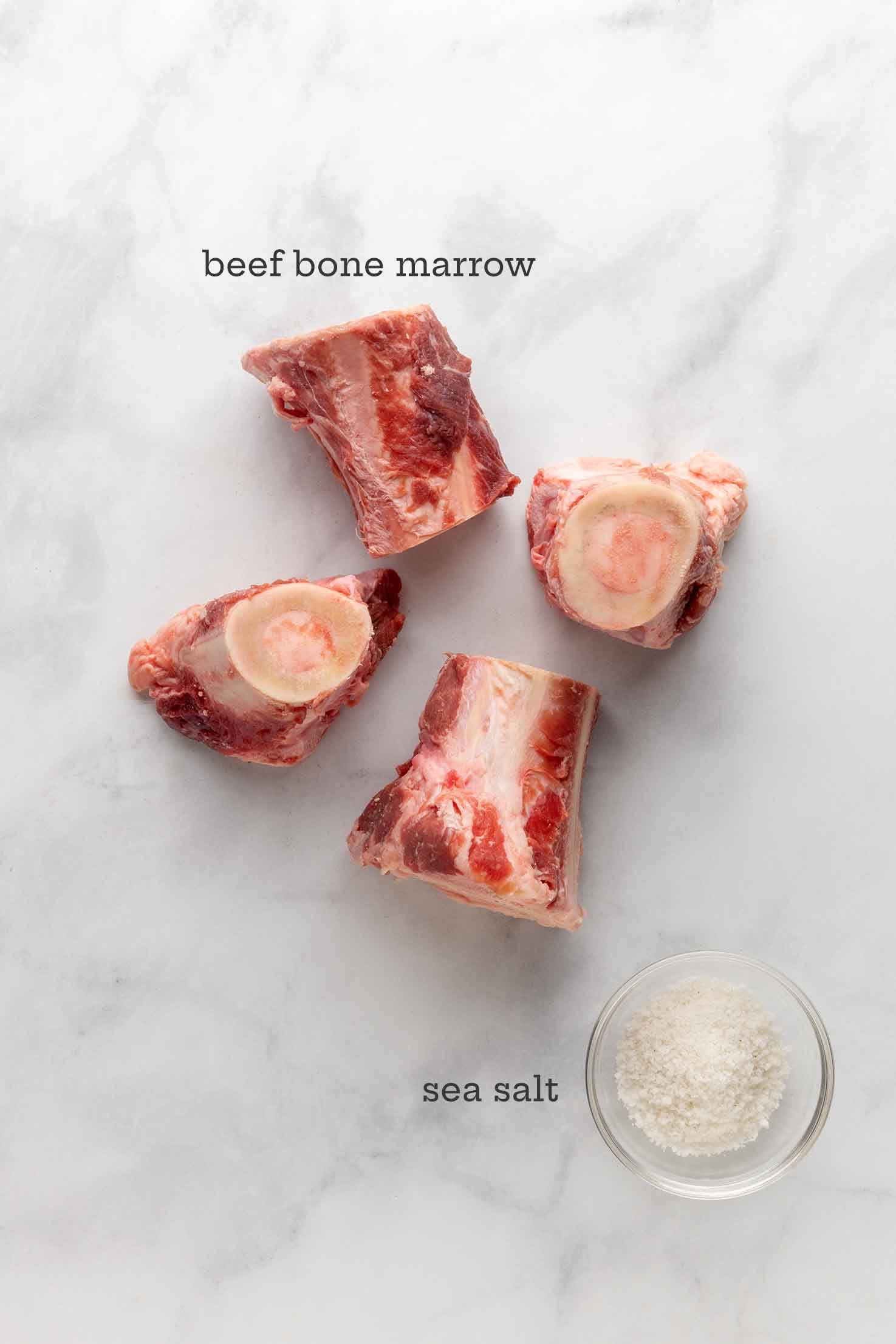
- Beef marrow bones: Ask your butcher for center-cut beef femur bones, cut crosswise into 2- to 3-inch lengths (often called “pipes”). Just like when ordering a semi-boneless leg of lamb for the Tuscan lamb, I go to a real butcher-butcher, not the guy at the supermarket counter who just gives me confused looks. This part of the leg has the highest ratio of marrow to bone.
- Sea salt: Use a coarse sea salt or Maldon flakes for finishing. The marrow is incredibly rich, so you need that aggressive, crunchy salinity to cut through the fat. Standard table salt will just disappear.
Visual step-by-step guide: Roasted bone marrow
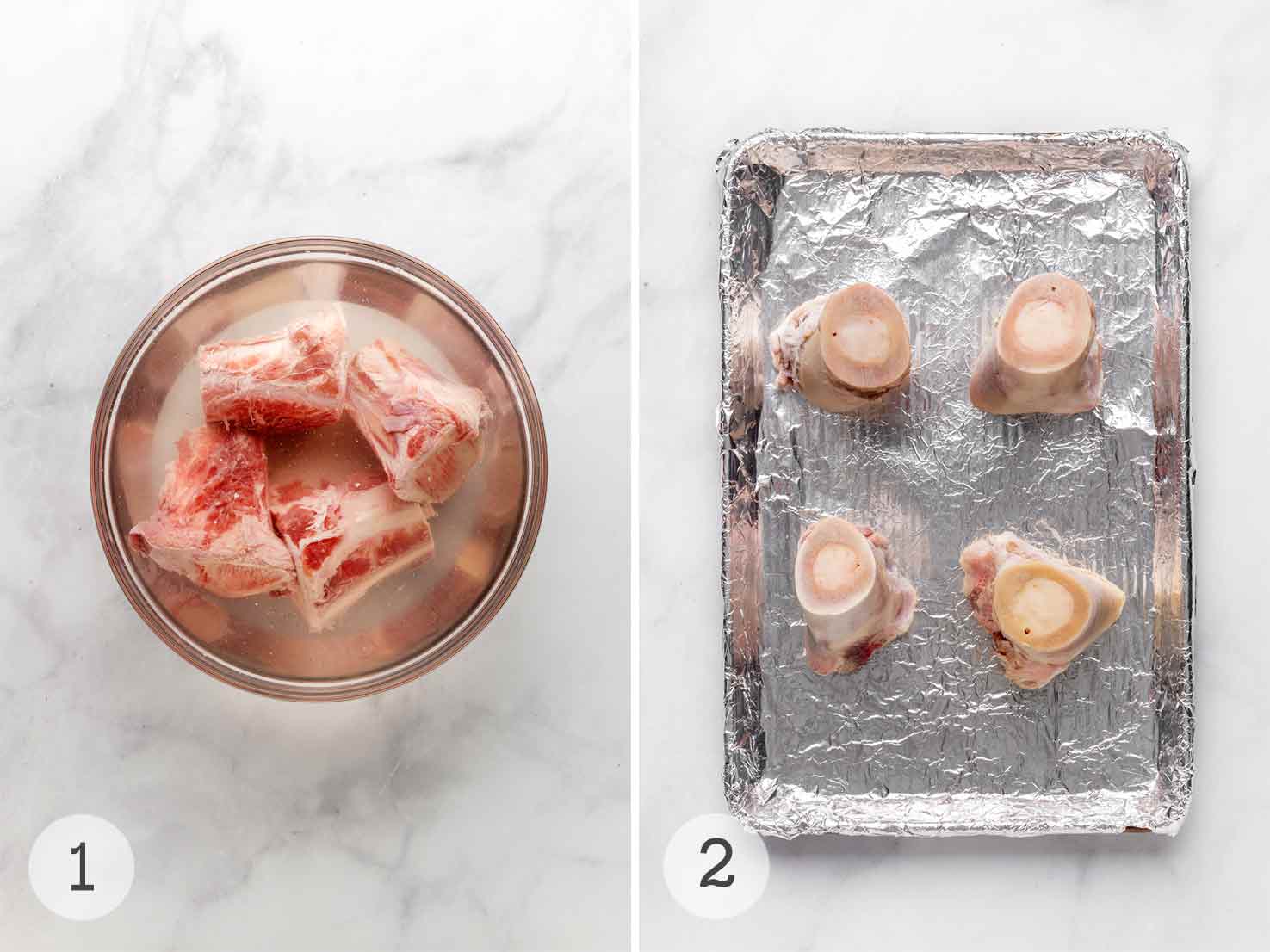
- Add the marrow bones to a large bowl and fill it with ice water, making sure they’re submerged. Add 1 teaspoon of salt for each cup of water in the bowl. Refrigerate for 12 to 24 hours, replacing the salt water solution every 4 hours.
- Drain the bones, cover them, and chill until you’re ready to roast them. Preheat the oven to 450°F. Place the bones, cut side up, in a roasting pan or on a sturdy baking sheet.
- Roast until the marrow is puffed and has reached an internal temperature of 145°F (63°C). Sprinkle with sea salt and serve immediately.
Your roasted bone marrow questions, answered
According to dietitian Rachael Ajmera on Healthline, marrow has a very high collagen content, which improves joint and skin health and reduces inflammation.
I recommend it. Soaking the bones draws out any remaining blood or impurities. It’s cosmetic, and there isn’t any harm in cooking the marrow without soaking, but it makes for a prettier presentation, and you won’t find any clumps of coagulated blood while you’re enjoying your meal.
Yes. I recommend defrosting the bone marrow in the refrigerator before cooking. You can cook it directly from frozen, but the roasting time will increase.
Pro tips & troubleshooting
- Choose your length: Marrow bones can be cut to any length you want. Ask your local butcher for pieces cut from the center of the leg bone, where the ratio of marrow to bone is highest. It’s tricky to judge how much marrow you’ll get from any bone as it ranges widely depending on the thickness of the bone: A 3-inch (7.5-centimeter) bone usually averages around 1 1/2 ounces (40 grams).
- Stop the leak: Since cross-cut bones stand upright, the rendering fat can sometimes escape out the bottom. To prevent this, I wrap a small piece of foil around the base of each bone, creating a seal with just a smidge of a rim crimped up the sides. This catches that liquid gold so it stays in the bone (or at least on your plate) rather than ending up in the bottom of your roasting pan.
- Stock up: Buy extra bones to be sure you have enough. Bone marrow freezes well in or out of the bone.
- Canoe cut: You can ask for the bones to be cut lengthwise, called canoe cut. This makes the marrow easy to get at with any spoon—no need for a fancy long-handle spoon.
Storage & reheating
Once soaked, bone marrow should be refrigerated and cooked within 24 hours or frozen for up to 3 months. To freeze bone marrow, wrap the soaked bones in plastic, then store them in a resealable bag or airtight container.
After cooking, roasted bone marrow can be refrigerated for up to 2 days or frozen for up to 3 months. Reheat in a 300°F (150°C) oven until warmed through. Do keep an eye on it, as it will begin to melt if overheated.
Leftover cooked bone marrow can also be mixed into butter to create an excellent compound butter topping for grilled beef tenderloin.
Want to save this?
What to serve with marrow bones
If you’re serving these as a first course or appetizer, simply sprinkle with a bit of salt and pepper, garnish with some fresh herbs or microgreens, and serve with some toasted bread rounds.
If you want to make this a main course, offer it alongside a fresh salad dressed with lemon vinaigrette or some veggie dish, such as lovely roasted asparagus tart or maybe char up up some charred broccolini in the skillet.
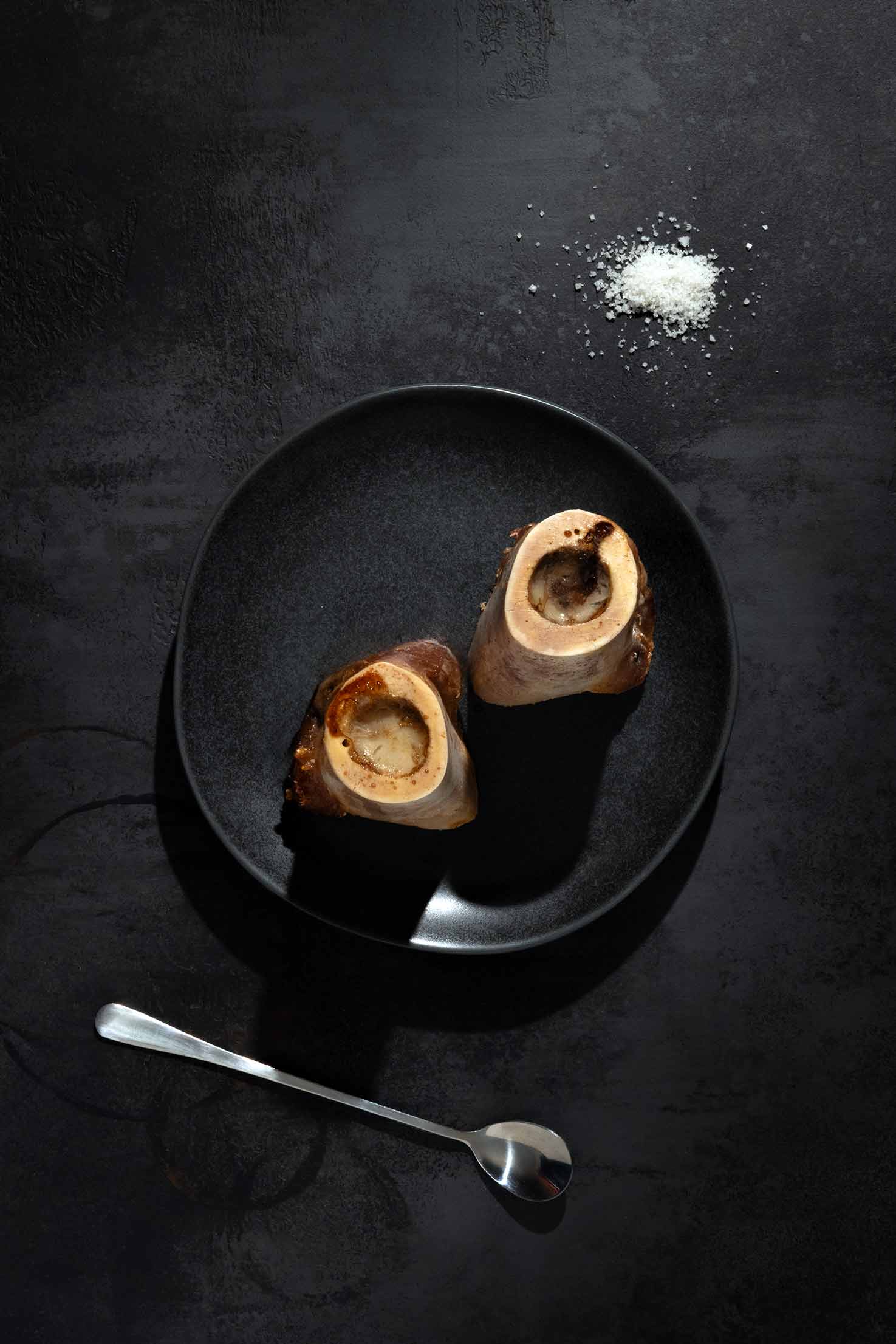
More outstanding beef recipes
Beef Bone Broth
12 hrs 40 mins
Veal Osso Bucco
3 hrs 15 mins
Sriracha Beef Jerky
4 hrs
Daube ~ French Beef Stew
4 hrs 30 mins
Write a Review
If you make this recipe, or any dish on LC, consider leaving a review, a star rating, and your best photo in the comments below. I love hearing from you.–David
Featured Review
This is one of the best recipe pages I’ve seen, and the recipe is accurate and clear. As a professional chef specializing in French cuisine, I’ve seen many ways of doing just about everything, and the comments reflect how versatile this ingredient is. The photo, explanation, civility when questioned, etc. all work together to make this a very nice place to look for ideas. Thanks very much!
Michael E.
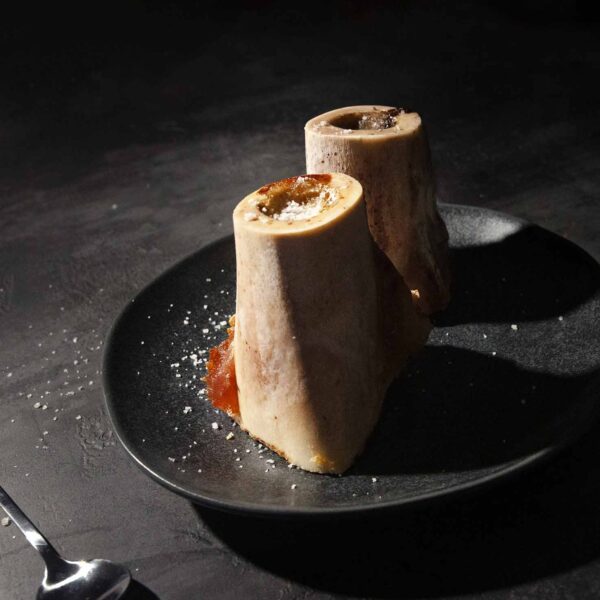
Roasted Bone Marrow
Ingredients
- four (3-inch) marrow bones
- coarse sea salt
- freshly ground pepper
Instructions
- Fill a large bowl halfway with ice water and add 1 teaspoon of coarse sea salt per 1 cup water. Add the four (3-inch) marrow bones and refrigerate for 12 to 24 hours, changing the water every 4 hours and replacing the salt each time.
☞ TESTER TIP: Some testers have asked us, "Do I need to soak the bones?" The answer is yes. This removes the blood and any impurities from the marrow.
- Drain the bones, cover, and refrigerate until you're ready to roast the marrow. Be sure to roast the soaked marrow within 24 hours or freeze the drained bones for up to 3 months.
- Crank the oven to 450°F (230°C).
- Place the marrow bones in a roasting pan. If the bones are cut crosswise, place them standing up; if the bones are cut lengthwise, place them cut side up.
- Roast for 15 to 25 minutes, until the marrow has puffed slightly and has an internal temperature of 145°F (63°C) in the center when measured with an instant-read thermometer. If you don't have a thermometer, insert a metal skewer into the center of the bone, then touch it to your wrist to gauge the marrow’s temperature; the roasted bone marrow should be very hot. Do take care not to burn yourself. There should be no resistance when the skewer is inserted, and some of the marrow will have started to leak from the bones.
- Sprinkle with sea salt and freshly ground pepper. Serve immediately with small marrow spoons for scooping.
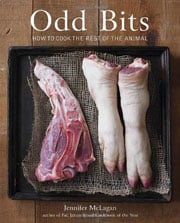
Explore More with AI
Nutrition
Nutrition information is automatically calculated, so should only be used as an approximation.
Recipe Testers’ Reviews
What an elegant treat this roasted bone marrow was! This dish is the epitome of classic French cooking to me—simple ingredients and methods with outrageously delicious results. And oh so impressive!
Served alongside a warm baguette, this appetizer was a real winner. Rich, creamy bone marrow spread on a piece of crusty bread—you can’t get much more decadent than that. It’s nature’s equivalent of butter on bread.
I sprinkled the tops of the marrow bones with kosher salt right when they came out of the oven for a little added flavor. A fancy, coarse sea salt would work well, too. I cooked my bones at 450°F for 30 minutes and the marrow came out perfectly.
I was incredibly excited to have the opportunity to make this recipe to ring in the New Year, especially since I’ve had this dish in several French bistro-style restaurants but never at home, as New Year’s to me is all about decadent food that’s comforting at the same time. My grocery store always seems to carry bone marrow, so believe me when I say that one of my New Year’s resolutions is to treat myself to this culinary delight many more times this year!
Although I personally thought the recipe was too long-winded—I’ve made roasted marrow before without the soaking—it turned out perfectly, and we thoroughly enjoyed eating it.
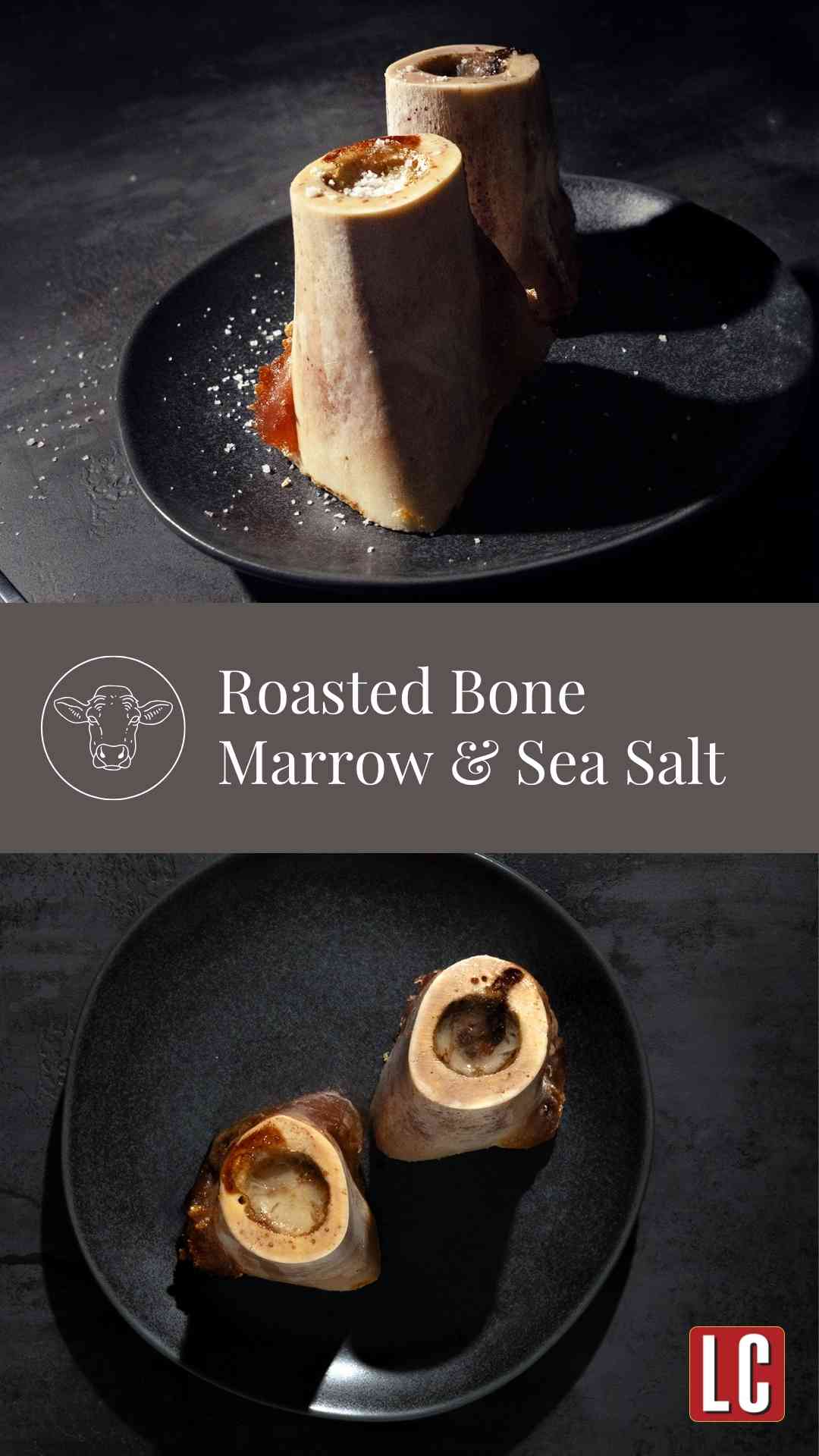
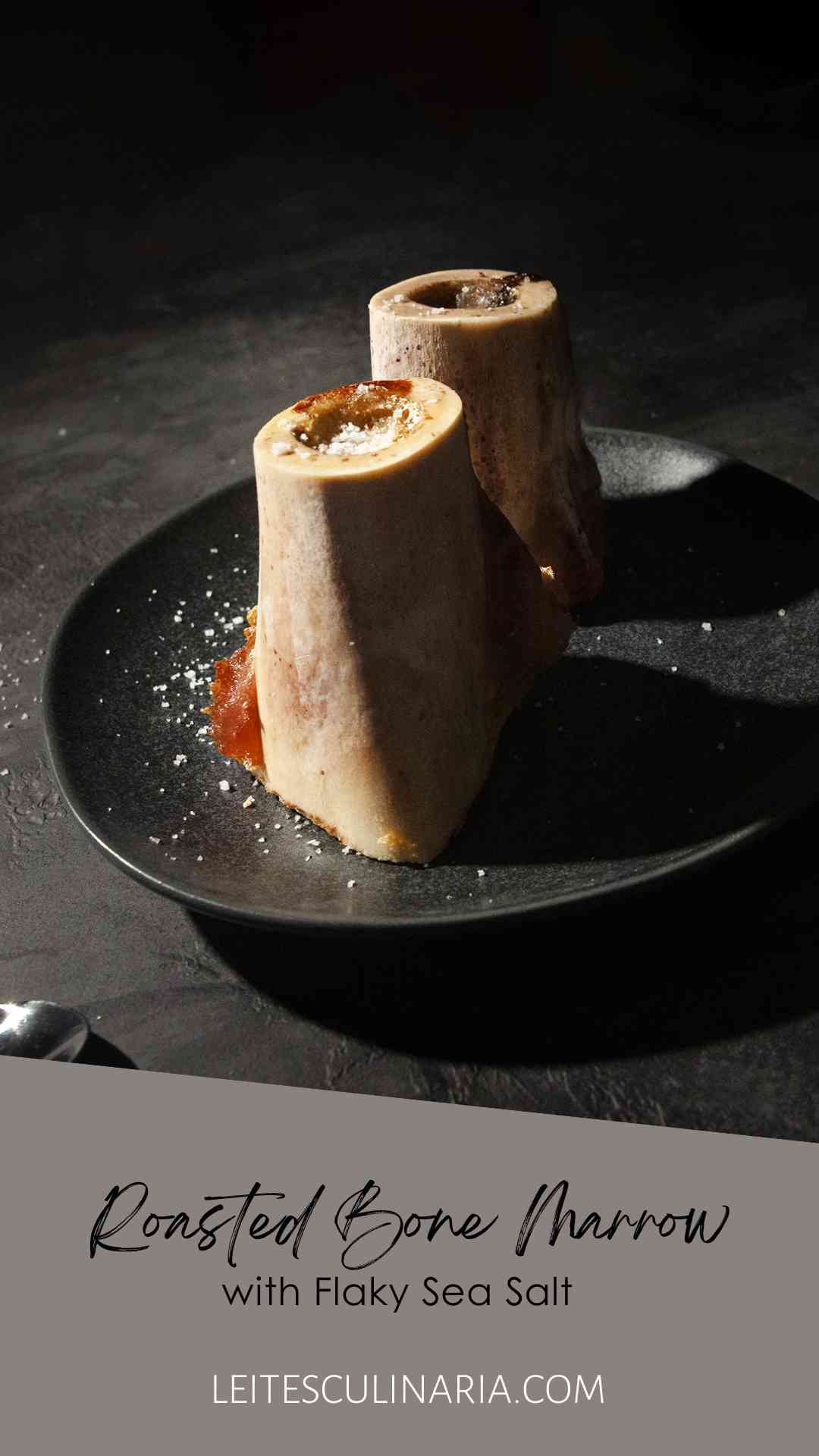
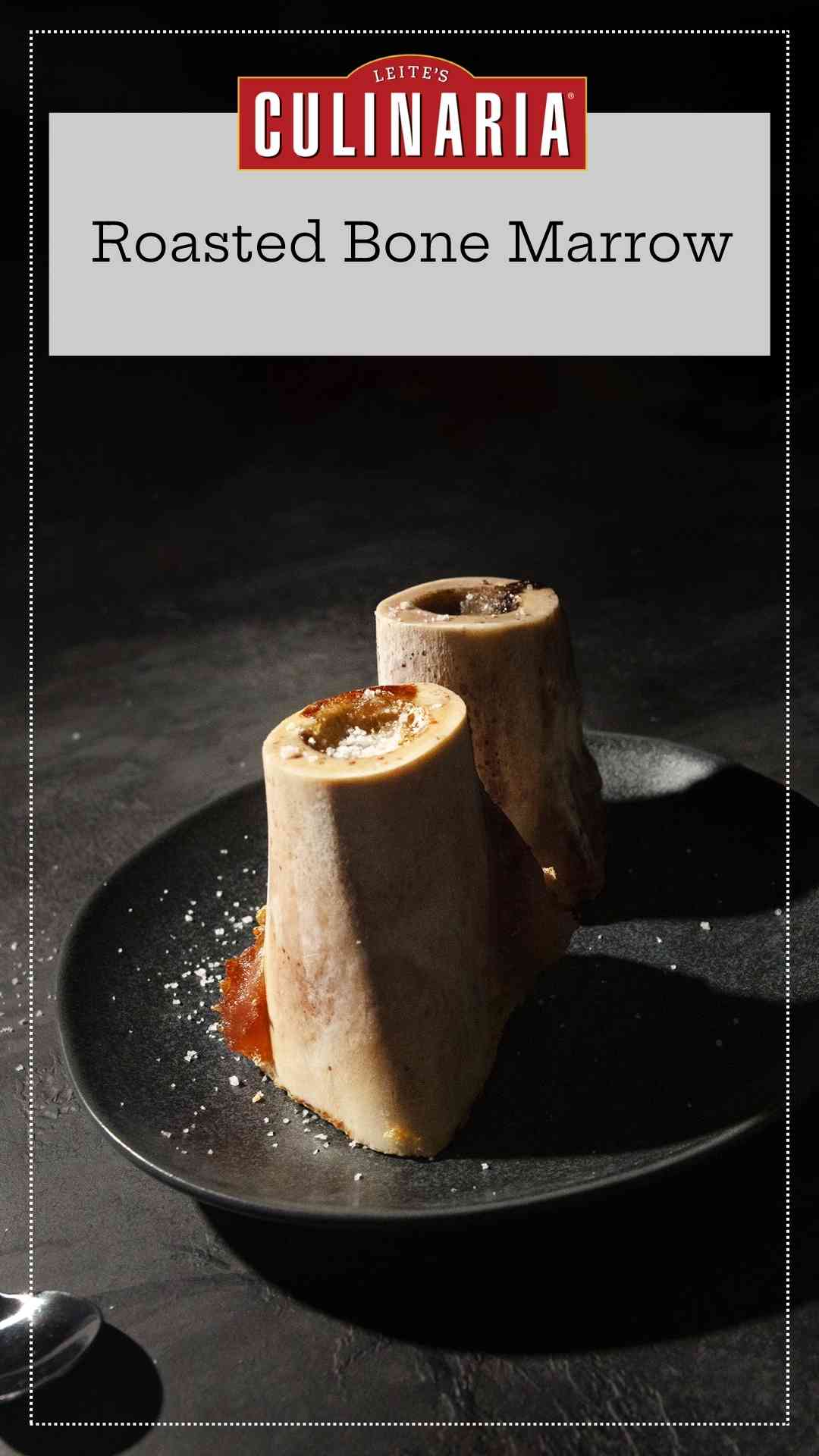
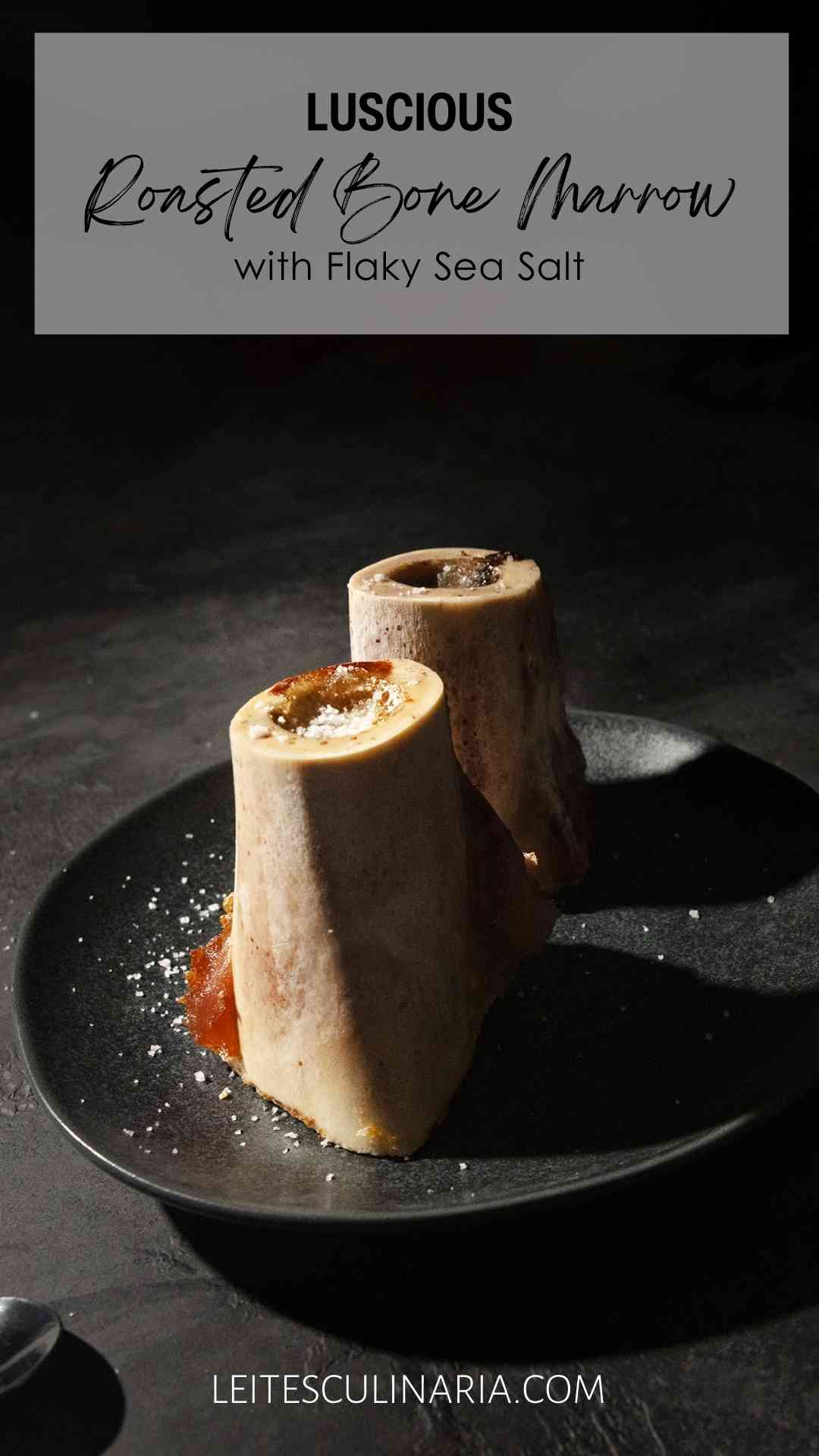
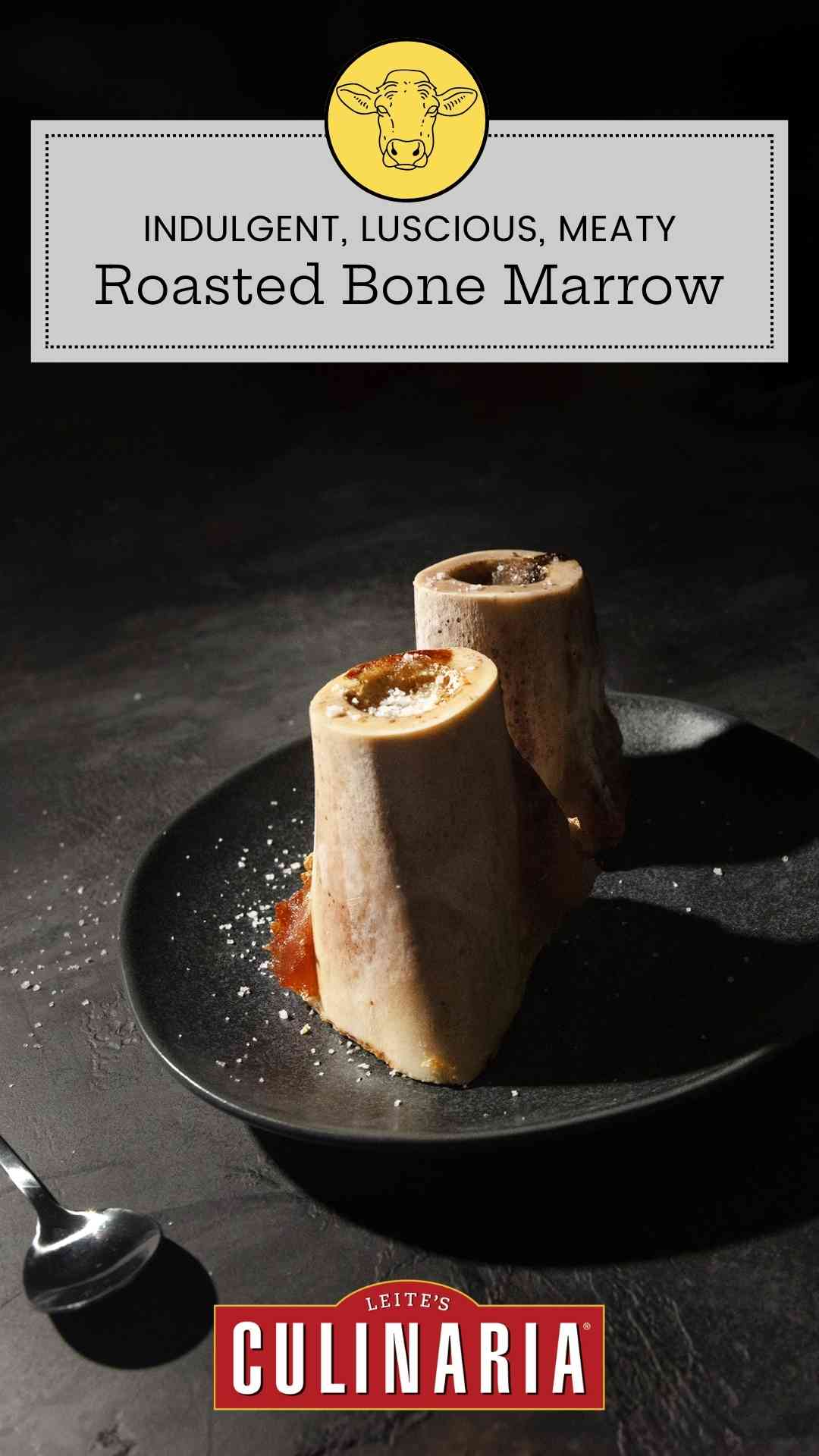

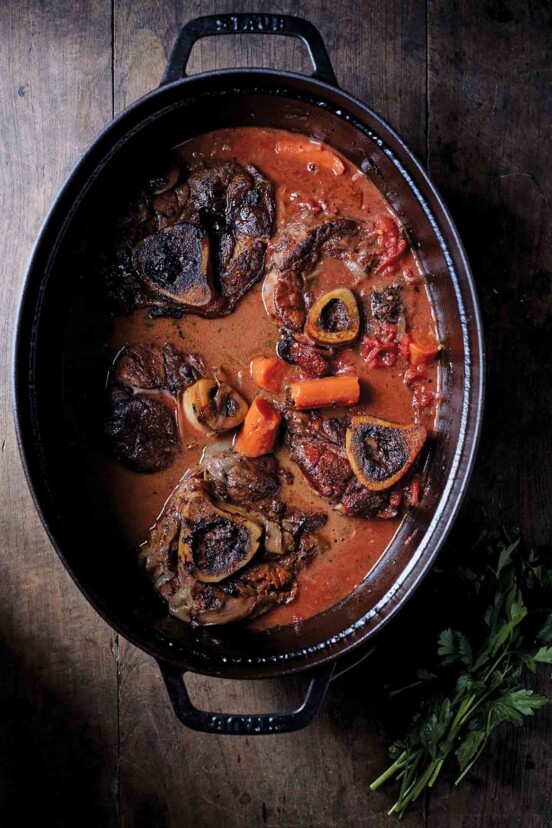
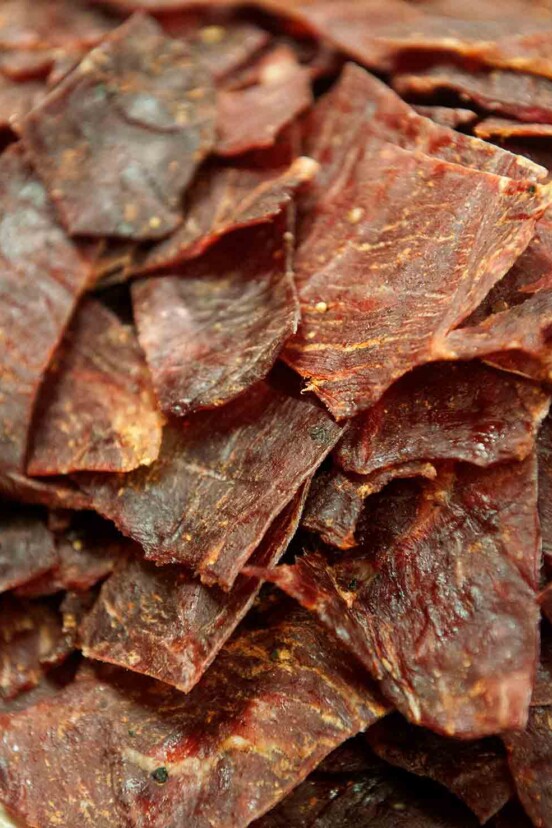
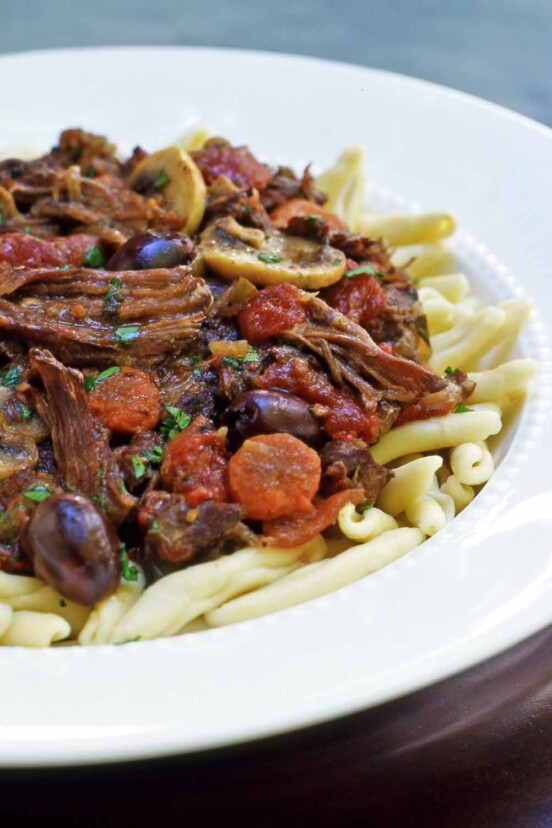











Great idea to soak bones of impurities, thank you. I generally roast bones to remove impurities (as well as bring out more flavor) prior to making my stock. In fact I was on here to see if there was any guidance on roasting bones at a much lower temperature than the usually recommended 450 degrees F, since I have a new oven that can go down very low, prompting me to play with temperature. But i have never served marrow bones on top of, say, Pho, simply bc I don’t have the confidence in the hygiene of a juicy but not boiled marrow bone, especially a marrow bone originating from a farm or system I don’t personally know.
You’re welcome, Josh. Give it a try and let us know what you think.
Total, genuine props to David for his experience in a top-flight resto (!), but as a home cook I’ve done roasted bone marrow without the fancy soak, and it’s delicious. Can you tell me why you do it at such a high heat? I did it at about 350 degrees and it was perfect. Plus, I make stock weekly, and LONG ago gave up skimming and filtering. Also delicious.
Thanks for the marrow recipe! Love your site.
Sydney, I think Jennifer specified high heat so the marrow cooks quickly without melting too much. And thanks for the kind words!
This is one of the best recipe pages I’ve seen, and the recipe is accurate and clear. As a professional chef specializing in French cuisine, I’ve seen many ways of doing just about everything and the above comments reflect how versatile this ingredient is. The photo, explanation, civility when questioned, etc. all work together to make this a very nice place to look for ideas. Thanks very much! -m.
Thank YOU, Michael. We so appreciate you taking the time to comment.